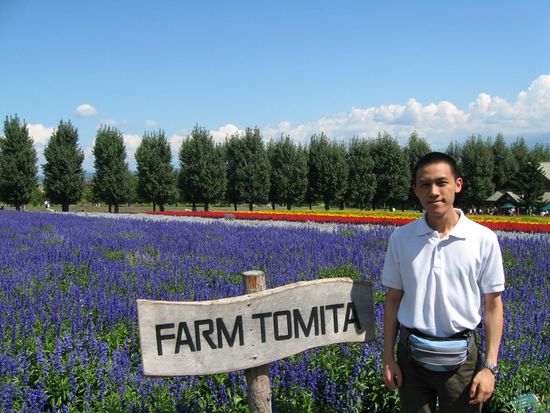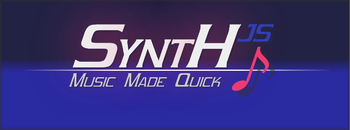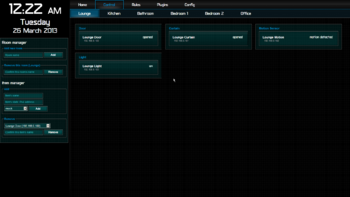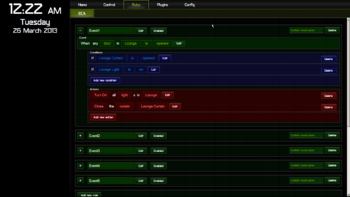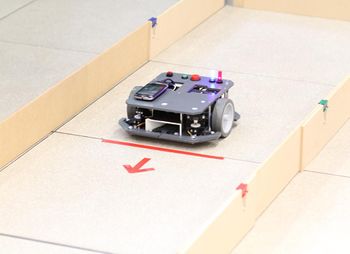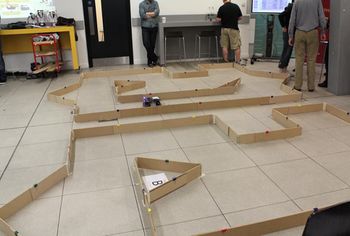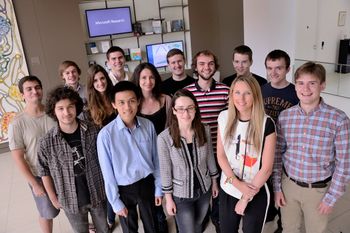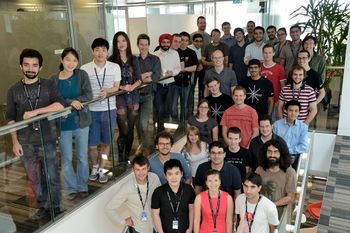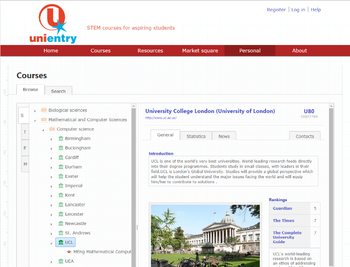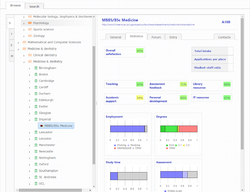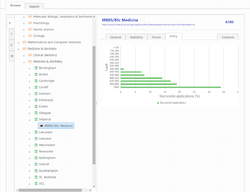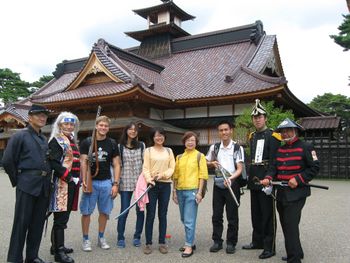Difference between revisions of "Main Page"
Changtau2005 (Talk | contribs) (→Pastimes) |
Changtau2005 (Talk | contribs) (→Pastimes) |
||
| Line 120: | Line 120: | ||
==Pastimes== | ==Pastimes== | ||
| − | [[File:Misc-goryokaku.jpg|thumb|right|350px|With friends and staff at Goryokaku, Hakodate, Hokkaido, Japan. Goryokaku is a five-pointed star fort inspired by Vauban's creations in Europe. The building in the background is the seat of the government in the middle of the fort.]] | + | [[File:Misc-goryokaku.jpg|thumb|right|350px|With friends and staff at Goryokaku, Hakodate, Hokkaido, Japan. Goryokaku is a five-pointed star fort inspired by Vauban's creations in Europe. The building in the background is what used to be the seat of the government located in the middle of the fort.]] |
I enjoy reading. In particular, books that explore particular areas of science like: | I enjoy reading. In particular, books that explore particular areas of science like: | ||
* Brian Greene's [http://books.google.co.uk/books/about/The_Elegant_Universe_Superstrings_Hidden.html?id=okv_O0Xhl9gC&redir_esc=y The Elegant Universe] (physics) | * Brian Greene's [http://books.google.co.uk/books/about/The_Elegant_Universe_Superstrings_Hidden.html?id=okv_O0Xhl9gC&redir_esc=y The Elegant Universe] (physics) | ||
Revision as of 10:30, 6 October 2014
Hi! I'm Li, a 4th year student at University College London currently working on an MEng in Computer Science. I'm most interested in applications of machine learning to large data sets. I haven't decided on a specific research area, but my current interests slant towards applying machine learning to areas related to data mining, semantic computation, and natural language processing. The data I've worked with in the past are web-based (AOL search logs, Bing session data, mined Twitter data, YAGO2).
Why computer science? At first, I entered the field because I love building things. Stacks. Factories. Interfaces. Semaphores. Software are teeming cities running like clockwork on top of layers and layers of abstraction. I thought that I wanted to be a developer for sure, but then I began to see some really interesting problems and approaches to solving them in the field, so I focused my efforts on research too. Computer science (and AI / machine learning) is very much in the middle of interdisciplinary research, and I think this is where the most exciting things are happening. Before this, I was a medical student in Imperial College London - I left after two years - but that's a story for another time ;)
+ For people unfamiliar with computer science, machine learning really is just pattern recognition. If you can reduce a problem to a pattern recognition problem, then you can apply machine learning to solve it. It is a powerful technique that we can use to try and find features / trends / patterns hidden within huge amounts of data (DNA, stock ticks, the internet), or to classify that data into different categories (think algorithm that recognizes faces, road signs, or system intrusions based on anomalous behaviour patterns).
Resume
- UK version - 2 pages
- US version - 1 page - todo
Selected projects
SynthJS
SynthJS is a music sequencer built using web technologies that run entirely on the client machine. It is a project I came up with when I had about two weeks of free time during Christmas break back in 2013. I felt that my JavaScript was getting a bit rusty and I wanted to explore something related to HTML5, so after looking at emerging HTML5 techs for a while, I settled on a project that explores music technology for the web.
Progress on the project is now frozen partly due to the scope of the project being too big for two weeks (I couldn't gauge how much work it was going to be as the technology was new to me), and partly due to poor scaling of a DOM-based UI. As it stands, it has a reasonable suite of musical instruments, speed control, equalizers for individual instruments, an undo/redo stack (which was non-trivial to implement for a program like this), file import/export, and most importantly, you can sequence simple music with it!
- For the developer's diary, see Dev:SynthJS | Github repo
- To play with it, click here. Have fun!
RoboHome
This was a university systems engineering project. The objective was to build a platform-and-protocol-agnostic control system for home devices which is accessible and scriptable remotely via a web interface. The control system itself had to be low-cost, so we used a Raspberry Pi. Each RPi runs the drivers for devices for three platforms - Arduino, Belkin, and Microsoft Gadgeteer and a full web stack so we can connect to it via WiFi using a laptop to control it. We also had a separate server instance hosted on Azure that authenticates users and connect them to a remote RPi.
Robot race
A first year university project. We programmed a standard robot in C to navigate a track with obstacles as quickly as possible. The robot has a frontal ultrasound sensor, two IR sensors at the frontal corners, two frontal bump buttons, and a light sensor at the frontal bottom edge that stops it at the finishing line. The wheels were attached to stepper motors which drive them forward in numbers of ticks per second. The original idea was to map the course out and find the shortest path to the end, but because the robot has no point of reference relative to the tracks other than the ticks in both wheels, the tiniest bump (and momentum) throws everything off so nobody actually managed to perform the mapping!
The most straightforward solution in the end is simply a wall follower, and because we were allowed to change the code on racing day, the most successful teams were the ones which modified their algorithm last-minute specifically to target the course being run on (like maximum speed for 3 seconds after the 4th turn). That was a fun event, even if it didn't turn out like I expected!
Android app for field study
A first year university project. We programmed an Android app for the Restless Beings charity as an exercise in requirements gathering from the client. It was designed for quick and easy use by field workers to log health data on homeless children. The app was designed to work both online and offline, because the location of deployment is in rural Africa and only the centers of the largest towns have any sort of internet connection. These workers often work with the same children, so using the phone GPS, they track the movement of each individual over time to generate statistics like distance to the nearest water source.
Internships
Microsoft Research Cambridge
I joined Microsoft for 8 weeks as Research Intern through the Bright Minds Internship Competition programme for undergraduates. I was supervised by Pushmeet Kohli and Yoram Bachrach, with limited help from Ulrich Paquet and Filip Radlinski.
Since the allocated time is short, I was told about the problem and given a direction to start off on - it was about parental / access control of the internet. There were several problems in this area we hoped to address:
- Traditional access control relies on black and whitelists of URLs. For instance, OpenDNS offers a service where they simply refuse to resolve blacklisted domains. However, domain ownership changes constantly and the lists have to be updated to reflect this.
- A site is either blocked or not, based on a fixed criterion, and there is no customization of the partitioning. For example, if a company wants to block Facebook at work, they couldn't use a service which has it in the whitelist. You could customize the list, but if one generalizes the requirement to "I want to block all social media sites", that's not possible if there is no such list.
- Users can only recognize a tiny fraction of sites in either list.
We wanted to try a different method. The project was called SmartFence. Unfortunately I cannot go into too much detail (until the paper gets published at some point, hopefully), but I can talk about the ideas. First, we make the assumption that users tend to visit websites which serve the same information need in a session. Hence, websites belonging within a search session in Bing are said to be correlated, and we transform this correlation data into 30-dimensional feature vectors. We then construct a giant similarity matrix of websites based on these vectors. For our investigation, we constructed it in-memory for the top ~10k sites (by frequency of visitation) rather than for everything. When users block or allow the sites which they recognize, we label these -1 and 1 respectively (this becomes our training set). For any site which a user does not recognize, its score is calculated based on its similarity to all the other labeled sites (this is our hypothesis' output). We used a matrix primarily because the we need to be able to compute the partitioning quickly when the user changes the labeled set of websites or weighting decay function and cutoff.
We initially performed k-means clustering to investigate how the clusters would look like with different values of k. We wanted to see if these partitions made sense. Then we had a brief foray into reducing the vectors to two-dimensional space (bearing in mind information loss) so the user can draw out areas which they want to block or allow. We also briefly considered partitioning by Voronoi cells while working in 2D (because running convex hull becomes rapidly infeasible at higher dimensions). We finally abandoned hard cluster boundaries altogether, and settled on a kernel method. This meant that initially, every site is related to every other (a fully connected graph), and we cull the arcs by setting a minimum similarity threshold, and we control the partitioning by setting the value needed for a site to be blocked.
I delivered a working prototype in 4 weeks for the internal company hackathon, and a refined version with a web front-end (D3.js) at the end of the internship. I didn't have any exposure to machine learning before the internship, but thankfully, I managed to pick up the basics on-the-fly in a short period of time. The period before the hackathon was particularly intense, because we have to get a basic algorithm and interface going in just four weeks. My previous experience in web development meant that I could rapidly iterate multiple versions of the GUI to get something intuitive to what our algorithm was trying to do. My supervisors were quite pleased with what we achieved in 8 weeks. Filip took particular interest in the GUI implementation - he said it was more impressive than what one would usually see at a conference.
This was as good an internship as I could have ever hoped for. I got to see how it is to work in industrial research, I began to understand how powerful machine learning is, and what inventive things other researchers are doing with it, and most of all, I got the chance to work with some really fantastic people. I was trying very hard not to be the stupidest guy in the room - I was an undergraduate amongst PhDs and postdocs and people with decades of industry experience, but the guidance and support I received was second to none. It was awesome!
UniEntry
UniEntry is a startup company which I worked for in summer 2013. The problem niche it tries to solve is that in the UK, it is very difficult to make informed decisions when selecting universities. Rankings are not the only thing that matters - the atmosphere of the institution, the faculty, the focus and quality of research of the individual institutions etc... much of this information is not available in the prospectuses. I remember the experience selecting a UK university when I was still in my A levels - it felt like a shot in the dark. I was fortunate enough to be attending a college with excellent admissions tutors, so I had the benefit of counselling and advice on relatively obscure facts (like Gonville and Caius college in Cambridge University was the best one for medical studies, for example). Not every student is fortunate enough to have access to this kind of coaching, and even when I did, I felt like the choice was still not as informed as I would have liked it to be.
Enter UniEntry. It is founded as a part time venture by two individuals, who hired myself and another developer to develop a pilot site over the summer. UniEntry pulls information from the Higher Education Statistics Agency to bypass potential bias in the university prospectuses, to make the application process as transparent as possible.
While guest users can browse the courses, much of the platform is actually inaccessible to them. Registered teachers can monitor their students' applications and university choices, students of participating schools can register their grades and the platform will inform them about whether their choices are a good fit for their capabilities, and university undergraduates can register as coaches to guide and inform students and teachers.
The pilot site is supposed to be used as a proof of concept to get schools to be involved and to look for funding. We used the agile development model, so we had daily stand-ups, sprint planning, progress burndown charting, the works. The other developer (Wayne) and myself just went through the application process ourselves, so the two of us had great influence on what features a site like this should have to be useful. The site was developed in ASP.NET, and I was the primary front-end developer and designer. This was my first time working in a small start-up company - each one of us had multiple roles - planning, front-end, back-end, database, office boy, manual work etc. We had lunch together to discuss concepts or the project, and we had to help each other out on a regular basis. We did pair programming, we audited each other's code. It was a really close-knit team. Wayne initially came from an electrical engineering background, so I brought him up to speed on C#, polymorphism, generics, common design patterns and MVC in general. I love teaching and explaining things, so I enjoyed it and learned from it as much as he did.
After the initial three months, I maintained contact with the company and submitted bugfixes when requested. Right now there's not much progress being made because the CEO (Will) is busy with his own research projects. However, I think it is a project with a worthy cause - even in its current state as a pilot site, it's already useful even to guest users. I think I would have benefited from it when I was applying to universities myself, so I certainly hope it gets the funding it needs to be completed at some point.
P.S. At the end of the internship, Will brought us all for a helicopter ride around London as a surprise treat for a job well done!
Other
My other experiences are related to my brief stint in medical school rather than computer science, but I consider them to be valuable and one-of-a-kind.
- Work shadowing in van Andel Institute, Michigan, USA. I generally observed the environment and working atmosphere within a biomedical research lab. I learned about what the researchers do on a regular basis, things like automatic sequencing, running DNA microarrays etc. I learned how they made knockout mice (mice with certain genes deactivated) to study its effects, and how they highlight sections of DNA by binding highly specific fluorescent molecules to them, using techniques (with really fancy names) like spectral karyotyping and fluorescent in-situ hybridization. Looking back at my experiences in the lab, it always reminds me of how different the nature of the work in the various fields of science can be.
- In Malaysia, I had a work placement in a hospital's critical care unit and department of anaesthesia. I remember how meticulous everything was - the cleanliness precautions we had to take, the nurses charting the patient's statistics every few hours, etc. Later on, I was attached with the Department of Public Health of Penang, and we went off checking the safety of water supplies and fogging areas with reported cases of dengue fever.
Research
I was fortunate enough to have the opportunity to be involved in several short-term research projects (2 months - 6 months) during my undergraduate years. Generally, internship opportunities for undergraduate students in the UK tend to be limited to development work.
Big Five Personality Classification of Twitter Profile by Machine Learning
This is the title for my Masters dissertation. At the time of writing, I've just begun to work on it, so everything is still highly tentative. Supervisor: Emine Yilmaz. Personal tutor: Dr. Kevin Bryson
By mining the text corpus of individual Twitter profiles, we hope to classify the user in the five categories of the Big Five model. We plan to do so by identifying adjectives in them labeled with a "weight" towards one end of each category. Such labels can be found from the seminal Allport-Odbert 1936 list and in similar works. We are scoping the project to only consider Twitter profiles in English.
We hope that the findings form a basis for further research into identifying individuals with potential signs of depression based on their Twitter activity. Depending on the speed of progress, we might have some time to consider this part of the problem.
SmartFence
- Please see #Microsoft Research Cambridge
Task Identification using Search Engine Query Logs
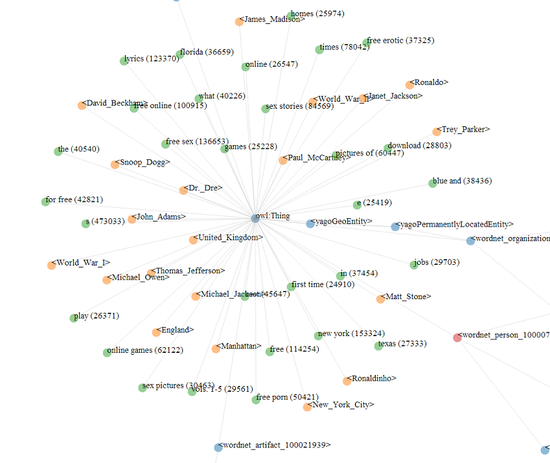
This was my undergraduate university-based research project. The goal is to find out what users are most interested about when they search for a certain class of things. For example, using Google's related searches, if you search for Hawaii, it gives you results along the lines of Hotels in Hawaii, or Flights to Hawaii. Based on our understanding of how Google's system works, these are the most common strings appearing with Hawaii in searches.
We wanted to go one step further. By using a knowledge base like YAGO and the set of AOL logs leaked in 1997, we do the same, but with semantics. First, we build up a class tree using the YAGO ontology. An example of a branch would be: Root --> Person --> Artist --> Musician --> Singer. Then, we add entities to each of these classes based on rdf triples expressing it, like ElvisPresley hasClass Singer. So, when we find a search string referencing the entity ElvisPresley, we remove the entity from the string and map the remainder to the class the entity belongs to, as well as all the ancestors of that class. For example, the search string Biography of Elvis Presley would map the string Biography of to the classes Root, Person, Artist, Musician, and Singer. Hence, by querying nodes of this tree, we can find out the most popular tasks users want to do when searching for any class of things. I thought this was an extremely interesting problem to tackle.
AOL logs come from real data, and real data is messy. It was full of typographical errors, machine-issued queries, and foreign languages, keywords unsafe for minors, etc. To give an idea of what we did to get useful data out of it, first, we ran all the searches through a simple regex sieve to filter out nonsensical queries (only symbols, URLs), or machine-issued queries, which tend to be very long. We then had to run Porter-Stemmer on it to match strings to entities. The Porter-Stemmer algorithm reduces English words to their root word, so we can match it against the entities in the YAGO knowledge base. We also had to think about greedy matching. Consider the string New York Times. We want the entire string rather than matching New York and times.
We also ran into problems of ambiguity - for example, Java may mean the programming language, or the place in Indonesia, or a dozen other things. We disambiguate by comparing the number of similar classes terms belong to. For example, if a search session contains the terms Scala and Java, we can be sure that Java means the programming language. The problem is if we only have one entity matched in a session, we cannot disambiguate because we don't have another entity to compare it against, so we ended up discarding many such sessions, so the remaining data only managed to populate the tree up to around the third layer. That was as far as we got in three months, but after I delivered the presentation, the project was awarded best research project in our year.
- Task Identification Using Search Engine Query Logs (Lit review coursework)
- Task Identification Using Search Engine Query Logs (Results report)
Pastimes
I enjoy reading. In particular, books that explore particular areas of science like:
- Brian Greene's The Elegant Universe (physics)
- Eric Drexler's Engines of Creation (nanotechnology).
There are many more, but those are my favourites. I admire these authors, as I think it takes supreme understanding of one's field to be able to explain it in such a way that people outside of it can appreciate the ideas.
As for periodicals, I like material like National Geographic, The Economist, and New Scientist. I've also been studying Japanese on my own in my free time for almost a year now - now I can maybe read, speak, and listen at the level of a child in grade school. Naturally, I enjoy reading manga and watching anime too, and I study well-known works that I've read before like The Little Prince or Treasure Island in Japanese. The best place to learn a language is in its country of origin, so I went off to Hokkaido for a month-long home stay and an intensive course in a language school in September 2014. That was the best trip I've experienced yet.
In my more carefree years, I used to play games quite a bit - BG, NWN, Torment, Panzer Dragoon, C&C, Starcraft, Warcraft, Total War, SupCom, Galciv, SotS, Civ, DotA, Diablo, Wing Commander, Freespace, Freelancer, X series, XCOM, Unreal, Mass Effect, Kirby, Zelda, Pokemon, all manner of JRPGs like Mana, Persona, Disgaea, Suikoden, Star Ocean, Etrian Odyssey, Dragon Quest, Tales, Grandia, Kingdom Hearts, FF... and a whole load more. Nowadays I no longer have the time for them, but some of these did wonders for my imagination - they are like novels or epics that stay with you forever. I play the piano and the erhu and gaohu (Chinese viola and violin), and I used to be the instructor and lead player for the erhu back in high school.
